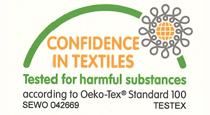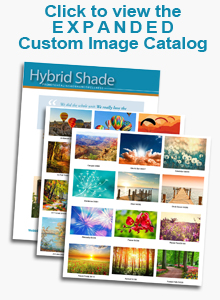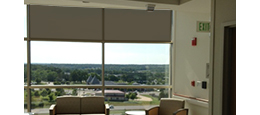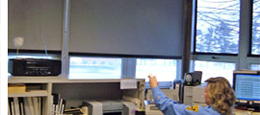LEED Contribution |
||||||||
Per The U.S. Green Building Council (USGBC), LEED certified buildings save money and resources as well as have a positive impact on the health of occupants, while promoting renewable, clean energy. Below is a list of LEED credits which WebbShades may contribute to: |
||||||||
 |
|
|||||||
 |
Daylight and Views window shades: To connect building occupants with the outdoors, reinforce circadian rhythms, and reduce the use of electrical lighting by introducing daylight and views into the space. WebbShade window coverings allow occupants to self operate window shades, allowing a connection between indoor spaces and outdoors views and diffusing glare for visual comfort and reduction of artificial light usage. |
 |
Low Emitting Materials solar screen fabric: To promote occupants comfort, well-being, and productivity by improving indoor air quality. WebbShade uses fabrics GREENGUARD certified which meet low emissions standards. |

Innovation in Design
 |
Optimize Energy Performance: To provide design teams and projects the opportunity to be awarded points for exceptional performance above the requirements set by the LEED Green Building Rating System and/or innovative performance in Green Building categories not specifically addressed by the LEED-Green Building Rating System. WebbShade exclusive privacy track reduces solar heat gain and loss, lowering energy consumption. |
Materials and Resources |
||||
|
||||
Fabric Certifications |
||
| Fabric used to construct WebbShades are certified in the below categories: |
||
 |
GREENGUARD Certified fabrics are tested for more than 10,000 chemicals to ensure they are safe and healthy for indoor environments and have low chemical emissions. The USEPA names GREENGUARD Certified products as the best strategy to reduce indoor air pollution and limit chemical exposure. To read more about GREENGUARD Certified products and what contributes to poor indoor air quality, visit greenguard.org |
|
| - - - - - - - - - - - - - - - - - - - - - - - - - - - - - - - - - - - - - - - - - - - - - - - - - - - - - - - - - - - - - - - - - - - - - - - - - - - - - | ||
 |
ASTM G21 is the determination of the effect of fungi on the properties of synthetic polymeric materials in the form of molded and fabricated articles, tubes, rods, sheets, and film materials.The synthetic polymer portion of these materials is usually fungus-resistant in that it does not serve as a carbon source for the growth of fungi. |
|
| - - - - - - - - - - - - - - - - - - - - - - - - - - - - - - - - - - - - - - - - - - - - - - - - - - - - - - - - - - - - - - - - - - - - - - - - - - - - - | ||
 |
Oeko-Tex Standard is the global standard is issued by the International Association for Research and Testing in the Field of Textile Ecology (Oeko-Tex) with headquarters in Zurich (Switzerland). It currently includes 15 neutral test and research institutes in Europe and Japan with contact offices in over 60 countries around the world. Fabric certified under the OEKO-TEX Standard 100 are tested for harmful substances and comply with the required criteria. To read more about Oeko-Tex Standard, visit eko-tex.com. |
|




